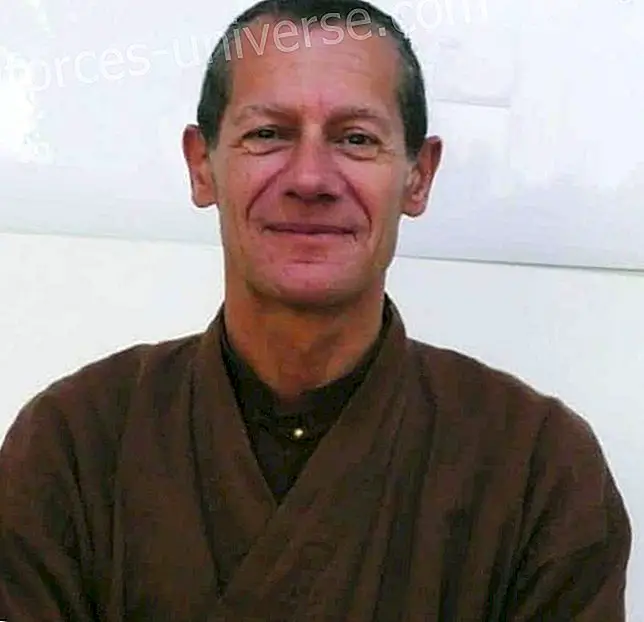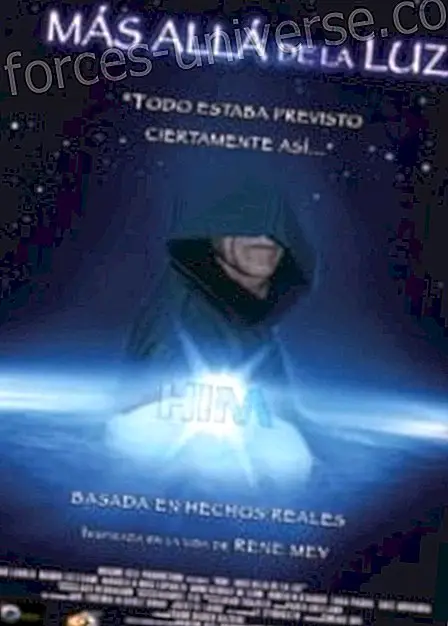 The possibilities of man are immense. You cannot even have an idea of what a man is capable of achieving. ”
The possibilities of man are immense. You cannot even have an idea of what a man is capable of achieving. ”
That is George Gurdjieff. Called by itself: " A simple Dance Master ." His work is important in the branches of music and mainly in literature, where he highlights his work Encounter with Notable Men, a trip he made to Asia, where he meets several people with whom he creates the group The Seekers of Truth, to those who lead towards a humanitarian and spiritual growth.
The Gurdjieff Caracas Foundation (one of the four founding members of the International Association of Gurdjieff Foundations), registers 1866 as the year of Gurdjieff's birth, in Alexandropol, Armenia, near the borders of Russia and Turkey.
In his childhood he emphasizes his Spartan life imbued by his father, in addition to a complex growth with needs. The same author in the book Stories of Belcebú, describes an experience with his grandmother, who alerted him when he said on his deathbed “you, the eldest of my grandchildren, listen! and always remember my last will: in life, never do anything like others, or do nothing at all. ”
As a child he spoke Turkish, Armenian, Russian and Greek. He studied at the Russian municipal school, thanks to his interest in Father Borsh, a member of the high-ranking Orthodox Church, but who lived modestly. His family told George that he would be a priest or doctor, so Father Borsh was responsible for training him in disciplines such as mathematics, chemistry, astronomy, history, theology, anatomy and physiology.
The trip to Tbilisi
At 17 he is in Tbilisi as a railroad employee. Meet your first classmates with interests in the occult. Sarkis Pogossian and Abram Yelov are one of them. The insistent interest of these three friends in the "paranormal" caused George Gurdjieff to be enchanted by the " search for truth " and thought that these philosophical systems were hidden somewhere.
In the ruins of Ani, they find the first key. Among some scrolls they discover a reference to the "Brotherhood of Sarmung", a secret society that suggested that it had been the school of the insulators, between Urmia and Kurdistan.
Gurdjieff decides to travel to this place to explore, with the goal of finding a monastery and being accepted into it.
What happens after this is uncertain, 20 years pass between the South Caucasus and Asia, where he acquires the thought that would be embodied in his books.
Meeting with Notable Men
In the imprecise year of 1895, a group of archaeologists, engineers, musicians and philosophers, follow Gurdjieff on random trips. It is said that he contacted leaders and powerful organizations of hermetic, political, religious, mystic, occult and philosophers, whose access was restricted to ordinary men. Russian prince Yuri Liuboviedsky, becomes his best friend, with whom he shared a map of Egypt "before the sands."
Between 1898 and 1899, blindfolded, he was taken to Sarmung Monastery, where George Gurdjieff fully understood the Sacred Dances, the Enneagram and the numbers. This experience has no historical proof and the thinker never gave the location of this place, therefore, this event is taken as an allegory.
Tibet
Around 1900, in Tibet he studied ritual dances, medicine and psychic techniques. After a fray between tribes, he returns wounded with a bullet and at this moment intensifies the search for self-control, assuming the sense of responsibility.
Then he suffers the "estera impulse" or love for his fellow men; compassion will go hand in hand with wisdom and seek the ideal of the " good egoist ."
In Central Asia, he is shot for the third time due to a fight between Cossacks and Gourians.
The Fourth Way
His efforts were aimed at spreading the Fourth Way, a doctrine he forged along with Piotr Ouspenski, a Russian writer who supported Gurdjieff in the teachings of his thinking in the west.
In the book with the same name, the teaching affirms that the fourth path must be found and its search is not easy, since this path is more difficult to the other three paths: that of the fakir, an ascetic dedicated to physical tests ; that of the monk, ascetic dedicated to a religion tamed by a solitary life through emotions and that of the Yogi, yoga practitioners who focus on the intellect. These paths, according to George Gurdjieff, led to nothing, a total response to his thinking discipline, which dictated that neither science and religion gave him answers to his questions about existence. That is why he believed that the fourth path could be accessed, a place outside this world where individual development could be enhanced.
The difference between the three paths and the fourth is that the former are subject to permanent forms; the fourth has no specific form, it is the synthesis of the previous three, it is the communion of the fakir, monk and Yogi at the same time, the dedication of physical, emotional and mental tests.
The Gurdjieff Institute
Paris ends up being the place where Gurdjieff installs an Institute in a French aristocracy mansion. Appealing to his persuasion, he achieves a good business to build his new headquarters (he had already tried with other offices in other places outside France).
Physical exercise rooms and sacred dances, a theater, stables and house of studies are built. They were called "The philosophers of the forest", since the facilities were in the middle of forests and gardens.
Divided opinions arose from this congregation, but he got the European "intelligence" to visit him. On December 13, 1923 the first public presentation of the sacred dances in the theater of the Champs Elysees is made, receiving good reviews.
Subsequently, his presentations are made in New York and Chicago, getting the attention of the world's newspapers.
The end
On the way to Paris in the summer of 1924 he suffered an almost fatal accident. He recovers without scientific explanation, creating a halo of mysticism around this event.
He changes his work completely, closes the Institute and writes stories of Belcebú to his grandson.
In 1926 his wife Julia Ostrowska dies. Gurdjieff gets into debt. He begins to produce his new book Meeting with Notable Men, whose lyrics are taken to the movies later.
In 1933 he lost the mansion that housed his Institute for more than a decade.
He travels to the United States for the last time in 1949, to supervise his books. His health worsens and after performing the choreography of his last "movement", No. 39, he collapses to the ground and is taken to the American Hospital of Neuilly, where surrounded by disciples he says his last words.
I leave you in a mess!
It was on the morning of October 29 of that 1949 when Gurdjieff abandoned the dialogues with earthly life. He was buried in Fontainebleau, Avon, next to his mother and his wife.
At the head of the ceremony, Jeanne de Salzmann, one of the few female followers of Gurdjieff, told her disciples:
When a teacher like Mr. Gurdjieff disappears, he cannot be replaced .
George Gurdjieff, biography and commandments






